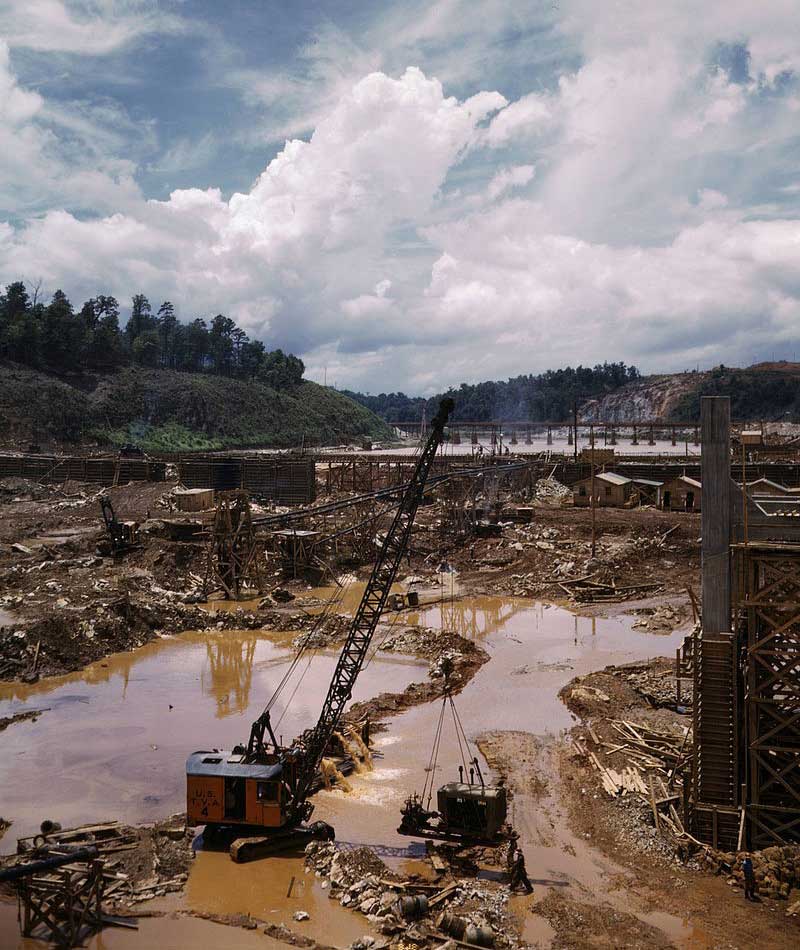From great depression to great prosperity
As a clean power supply, hydropower has many benefits to the electrical grid. It is renewable, comparatively affordable and a low-carbon technology. Being close to water typically brings strong economic development and prosperity. The ancient Egyptians knew this, and owed the blossoming of their culture to the Nile River.
Even today, underdeveloped regions can grow swiftly when they establish hydropower. The development of new hydropower plants brings new opportunities, people and jobs, all while expanding an area’s infrastructure. In many regions, the addition of hydropower has been the crucial trigger for an economic and social boom.
A perfect case in point is the United States’ Tennessee Valley, a region that has prospered since the installation of a series of hydropower plants over the last 80 years.
Struck by Depression
In 1929, the Great Depression hit the U.S., and by 1932, one in four Americans was unemployed. One U.S. region that was hit particularly hard by the crisis was the Tennessee Valley, an area covering multiple states with about four-and-a-half million inhabitants. On average, households at the time earned only $639 a year. Many families, however, had to survive on less than $100 per year. Infrastructure was also critically underdeveloped, and, in 1936, only 2 percent of the region’s farmers were connected to electricity.
Adding to the nationwide economic crisis was the Tennessee Valley area's ineffectual agricultural practices. Throughout the valley, farmers often planted the same crop year after year, rather than rotating them between seasons. In a crisis that coincided with the Great Depression, crop yields collapsed as regional incomes fell. In addition, centuries of deforestation by the logging industry and nutrient depletion left the soil in poor condition and unable to maintain plant life, which led to disastrous levels of erosion. The fluctuating water level of the Tennessee River also led to repeated flooding throughout the area.
The New Deal and Tennessee Valley Authority
President Franklin D. Roosevelt tried to come to grips with the multiple crises hitting the U.S. by instituting the New Deal, a series of development programs that included major construction projects around the country. The goal was to modernize the nation, and one of the prime target areas was the beleaguered Tennessee Valley. Founded in 1933, the Tennessee Valley Authority (TVA) was formed to upgrade the infrastructure while creating new jobs and better opportunities for the region.
The project provided assistance to seven states, bringing hydropower and other resources to the region. With the know-how from TVA, the course of the Tennessee River was regulated providing flood control, dams were built for sustainable energy production, all while ensuring safe navigation for shipping. Additional projects included forest replantings, training for farmers and even recreational spaces for the inhabitants of the area.


Growth through Water Power
These measures and, above all, the electricity generated by the TVA, transformed life in the valley. Not only did electric light and modern household appliances simplify people's lives, but farmers could now also operate much more productively. Water quality improved and shipping traffic boomed.
The establishment of a steady supply of electricity attracted new industries to the area. Among others, numerous medical technology companies settled in Tennessee. They helped turn one of the poorest areas of the U.S. to one that continues to thrive today.
The hydropower plants within the TVA system were built between 1940 and 1970. TVA has been modernizing the hydropower equipment for the last 25 years, and plans to continue to modernize their fleet in the years ahead. This modernization will extend the life of the electricity generating equipment for another 50 years so that TVA can continue to provide electricity and other benefits to the people of the Tennessee Valley for many, many years in the future.
Today, 29 hydropower stations and a pumped storage power station line the Tennessee River. Together, they offer a capacity of 5,400 megawatts to the region. With other energy sources in the region, TVA provides electricity for 9 million people.
Voith technologies
- Francis, Kaplan, Pump Turbine and Pelton hydro turbines
- Aerating runners and fish friendly Kaplan runners
- Water filled Kaplan runners
- Synchronous generators
- Excitation systems
- Automation, governor and control systems
- Balance of plant systems
- Monitoring systems

